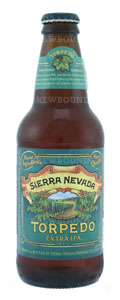
It’s a question many craft breweries are exploring and some, it seems, are banking on the continued growth of the style and the name, which is a shorter version of India Pale Ale. The country’s leading craft beer style, IPA dollar sales of $128,005,155 are up 35.7 percent in U.S. supermarkets through July 14, according to data from IRI, a Chicago-based research firm.
Not surprisingly, the number of IPA offerings currently being sold in supermarkets is also up. IRI counts 838 different SKUs in the channel, 440 more than it counted in 2009.
The growth of the IPA, with its distinct, hoppy flavor, has coincided with the growth of influential California breweries like Stone, Lagunitas, and many others, and it the popularity of the style seems to have pushed craft’s largest players, like Boston Beer Company, Sierra Nevada and New Belgium are answering the call by brewing up even more hop-forward variations.
Just last year, Boston Beer Company — the country’s largest craft brewery —released its “IPA Hopology” variety 12-pack, complete with six different styles of IPA. The company has even explored hybrid products, like its Whitewater IPA, which blends traditional American IPA and Belgian Wheat beer styles.
In February, New Belgium Brewing released its Rampant Imperial IPA, a higher proof version of the traditional IPA. Since its rollout, Rampant has quickly ascended to the top of IRI’s list of new craft beer brands with more than $1.3 million sales at U.S. supermarkets through July 14. Even Sierra Nevada, a stalwart producer of bitter brews and current manufacturer of country’s best selling IPA, Torpedo, is releasing a new fall twist on the style, Flipside Red IPA.
Amidst the barrage of new IPA introductions, there are also companies retrofitting their brands with IPA labels. Flying Dog renamed its Double Dog Double Pale Ale to Double Dog Double IPA earlier this year. Earlier this week, Odell Brewing confirmed that it would rebrand its Red Ale to Runoff Red IPA.
So what is driving beer companies towards IPA-dentification? Chris Lohring, the founder of Boston’s Notch Brewing, believes the branding choices are being made because because consumers are well-educated on the style.
“When a consumer sees IPA, they know it means hoppy,” he said. “It’s easier to communicate. IPA has replaced hoppy as a descriptor.”
Lohring, who wrote a lengthy blog post on the history of the IPA and its current meaning earlier this year, said he believes craft brewers are making a conscious marketing decision when choosing to rebrand their products as a certain type of IPA.
“Pale Ale is no longer sexy,” he said. “I get a lot of people at a beer fest who will come up and say ‘I’ll have your IPA,’ like it is some sort of requirement that every brewery has one.”
Lohring, who makes a lower alcohol IPA named Left of the Dial, believes most of the recent rebrands and new IPA introductions stem from increased consumer demand for the style.

“I created the recipe years ago and it was an early enough time when there weren’t a whole lot of imperial or double IPAs,” he said. “I think that double IPA more accurately represents the content of that package.”
It’s the same answer Amanda Johnson-King, a spokeswoman for Odell Brewing, gave the Denver Post when asked about the rebrand of its Runoff Red Ale.
“Red IPA wasn’t really a style when we released this beer, but it better describes the style and character,” she told the paper.
So are craft breweries simply updating their language to better inform customers, or are they creating confusion?
“It’s a slippery slope to box everything neatly into a style,” said Brophy. “There are legitimate beers out there that represent certain characteristics that craft beer drinkers are looking for. If you are going to have a hop-forward beer and you want to let people know about it, you have to put IPA on the label. “

Lohring fears that overusing the IPA moniker could drive consumers to develop “one-dimensional” buying habits.
“Styles exist as reference points for consumers to make a purchases based on what they want a beer to be,” he said. “If we debase styles to the point where consumers don’t understand what it means, we’ve lost the ability to educate them about the variations in craft beer.”
But that doesn’t mean he’s not on board with the trend.
“Every country has some kind of a style that represents that country,” he said. “For the USA, it is IPA and I think that is okay. We have found something that the consumer likes and if we are known as IPA-land, I think that is great.”